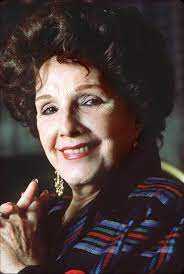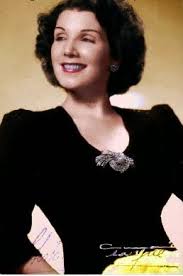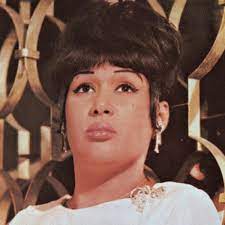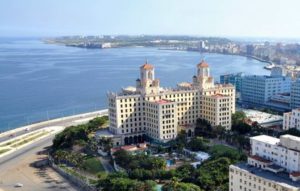DESI ARNAZ, ACTOR, MÚSICO, LÍDER DE BANDA, CÓMICO Y PRODUCTOR CUBANOAMERICANO. PHOTOS/VIDEOS.

Desiderio Alberto Arnaz y de Acha III, 2 de marzo de 1917 – 2 de diciembre de 1986), más conocido como Desi Arnaz, fue un actor, director de orquesta y productor de cine y televisión cubanoamericano. Interpretó a Ricky Ricardo en la comedia de situación de la televisión estadounidense I Love Lucy, en la que coprotagonizó con su entonces esposa Lucille Ball. A Arnaz y Ball se les acredita como los innovadores de la repetición sindicada, que fueron pioneros con la serie I Love Lucy.
Arnaz y Lucille Ball cofundaron y dirigieron la compañía de producción de televisión llamada Desilu Productions, originalmente para comercializar I Love Lucy a las cadenas de televisión. Después de que I Love Lucy terminó, Arnaz pasó a producir varias otras series de televisión, al principio con Desilu Productions y luego de forma independiente, incluyendo The Ann Sothern Show y The Untouchables. También fue el director de orquesta de su grupo latino, la Orquesta Desi Arnaz.
 VIDEOS- Program “I Love Lucy” (Avances)…
VIDEOS- Program “I Love Lucy” (Avances)…
VIDA TEMPRANA
Arnaz nació en Santiago de Cuba, Cuba, el 2 de marzo de 1917, hijo de Desiderio Alberto Arnaz y de Acha II (8 de marzo de 1894 – 31 de mayo de 1973) y Dolores “Lolita” de Acha y de Socias (2 de abril de 1896 – 24 de octubre de 1988). Su padre fue el alcalde más joven de Santiago y también se desempeñó en la Cámara de Representantes de Cuba.
Después de la Revolución Cubana de 1933, Alberto Arnaz fue encarcelado y todas sus propiedades fueron confiscadas. Fue liberado después de seis meses cuando su cuñado Alberto de Acha intervino en su favor. Luego, la familia huyó a Miami, donde Desi asistió a la escuela secundaria católica St. Patrick en Miami Beach. En el verano de 1934, asistió a Saint Leo Prep (cerca de Tampa) para mejorar su inglés. Su primer trabajo fue en Woolworth’s en Miami. Luego se dedicó al negocio de los azulejos con su padre antes de dedicarse al mundo del espectáculo a tiempo completo.
CARRERA ARTÍSTICA
Después de terminar la escuela secundaria, Arnaz formó una banda, el Siboney Septet, y comenzó a hacerse un nombre en Miami. Xavier Cugat, después de ver actuar a Arnaz, lo contrató para su orquesta itinerante, tocando la conga y cantando. Convertirse en una atracción estrella lo animó a formar su propia banda, la Orquesta Desi Arnaz.
Arnaz y su orquesta se convirtieron en un éxito en la escena de clubes de la ciudad de Nueva York, donde introdujo el concepto de baile en línea de conga en la ciudad. Llamó la atención de Rodgers y Hart quienes, en 1939, lo seleccionaron para su musical de Broadway ‘Too Many Girls’. El programa fue un éxito y RKO Pictures compró los derechos de la película.
Arnaz fue a Hollywood al año siguiente para aparecer en la versión cinematográfica del programa en RKO, que también protagonizó Lucille Ball. Arnaz y Ball se enamoraron durante la producción de la película y se fugaron el 30 de noviembre de 1940.
Arnaz apareció en varias películas en la década de 1940, como Bataan, protagonizada por Robert Taylor (1943). Su interpretación de Félix Ramírez, el miembro de la Guardia Nacional de California amante de las bromas, fue descrita por el crítico del New York Times, Bosley Crowther, como uno de varios actores secundarios que eran “convincentes en los papeles de soldados”.
 VIDEOS- Programa “I Love Lucy” (Avances)..
VIDEOS- Programa “I Love Lucy” (Avances)..
Después de la Segunda Guerra Mundial, tras su baja como sargento primero el 1 de diciembre de 1945, Arnaz formó otra orquesta, que tuvo éxito en presentaciones en vivo y grabaciones. Cantó para las tropas en el Hospital de Birmingham con John Macchia y contrató a su amigo de la infancia Marco Rizo para que tocara el piano y hiciera arreglos para la orquesta.
Para la temporada 1946-1947, Arnaz fue el líder de la banda, dirigiendo su Orquesta Desi Arnaz, en el programa de radio de Bob Hope (The Pepsodent Show) en NBC. Cuando tuvo éxito en la televisión, mantuvo la orquesta en su nómina y Rizo arregló y orquestó la música de I Love Lucy.
PROGRAMA “YO AMO A LUCY”
El 15 de octubre de 1951, Arnaz coprotagonizó el estreno de I Love Lucy, en la que interpretó una versión ficticia de sí mismo, el director de orquesta cubano Enrique “Ricky” Ricardo. Su coprotagonista fue su esposa en la vida real, Lucille Ball, quien interpretó a la esposa de Ricky, Lucy. Los ejecutivos de televisión habían estado persiguiendo a Ball para que adaptara su muy popular serie de radio My Favourite Husband a la televisión. Ball insistió en que Arnaz interpretara a su cónyuge en el aire para que los dos pudieran pasar más tiempo juntos. CBS quería al coprotagonista de Ball’s Husband, Richard Denning.
Inicialmente, la idea de que Ball y Arnaz, claramente latinoamericano, retrataran a una pareja casada encontró resistencia, ya que se les dijo que el acento cubano y el estilo latino de Desi no serían agradables para los espectadores estadounidenses. La pareja superó estas objeciones, sin embargo, haciendo una gira juntos, durante el verano de 1950, en un acto de vodevil en vivo que desarrollaron con la ayuda del payaso español Pepito Pérez, junto con los escritores de programas de radio de Ball.
PRODUCCIONES DESILU
Con Ball, Arnaz fundó Desilu Productions en 1950, inicialmente para producir el acto de gira estilo vodevil que condujo a I Love Lucy. En ese momento, la mayoría de los programas de televisión se transmitían en vivo, y como los mercados más grandes estaban en Nueva York, el resto del país recibía solo imágenes de cinescopio. A Karl Freund, el camarógrafo de Arnaz, e incluso al propio Arnaz, se les atribuye el desarrollo del estilo de producción de configuración de múltiples cámaras utilizando escenarios adyacentes frente a una audiencia en vivo que se convirtió en el estándar para las comedias de situación posteriores.
La compañía Desilu original continuó mucho después del divorcio de Arnaz de Ball y su posterior matrimonio con Gary Morton. Desilu continuó produciendo sus propios programas además de brindar instalaciones a otros productores. En 1962, Arnaz vendió su parte de Desilu a Ball y formó su propia productora después de su divorcio.
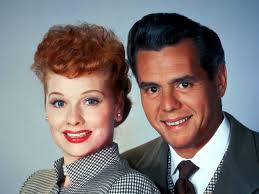
MATRIMONIOS
Arnaz y Lucille Ball se casaron el 30 de noviembre de 1940. Su matrimonio siempre fue turbulento. Convencido de que Arnaz le estaba siendo infiel y también porque llegó a casa borracho varias veces, Ball solicitó el divorcio en septiembre de 1944, pero volvió con él antes de que la sentencia interlocutoria fuera firme.
El matrimonio de Arnaz con Ball comenzó a colapsar bajo la presión de sus crecientes problemas con el alcohol, el juego y la infidelidad. Según sus memorias, las presiones combinadas de administrar la productora y supervisar sus operaciones diarias habían empeorado mucho a medida que la compañía crecía mucho más, y se sintió obligado a buscar salidas para aliviar el estrés. Arnaz también sufría de diverticulitis. Ball se divorció de él en 1960. Cuando Ball regresó a la televisión semanal, ella y Arnaz llegaron a un acuerdo con respecto a Desilu, en el que ella lo compró.
Arnaz se casó con su segunda esposa, Edith Hirsch (de soltera McSkimming), el 2 de marzo de 1963 y redujo considerablemente sus actividades en el mundo del espectáculo. Se desempeñó como productor ejecutivo de The Mothers-in-Law, y durante los dos años que estuvo al aire, hizo cuatro apariciones como invitado como un matador español, el Señor Delgado. Edith murió en 1985, a los 67 años, de cáncer.
Aunque Arnaz y Ball se casaron con otros cónyuges después de su divorcio en 1960, siguieron siendo amigos y se acercaron más en su última década. Cuando a Arnaz le diagnosticaron cáncer de pulmón en 1986, Lucille lo visitó y los dos vieron cintas VHS de “I Love Lucy”. En lo que habría sido su 46 aniversario de bodas, ella lo llamó por teléfono y hablaron por un corto tiempo, incluso diciendo “Te amo”. Terminó diciendo: “Está bien, cariño. Te hablaré más tarde”. Murió dos días después, el 2 de diciembre de 1986.
Lucy Ball fue una de las 100 personas que asistieron al funeral de Arnaz en 1986.
“I Love Lucy nunca fue solo un título”, escribió Arnaz en los últimos años de su vida. El video casero de la familia que se transmitió más tarde por televisión mostró a Ball y Arnaz jugando juntos con su nieto Simon poco antes de la muerte de Arnaz.

VIDA POSTERIOR
En la década de 1970, Arnaz copresentó una semana de espectáculos con el presentador y productor diurno Mike Douglas. Vivian Vance apareció como invitada. Arnaz también encabezó un especial de Kraft Music Hall en NBC que contó con sus dos hijos, con una breve aparición de Vance. Para promocionar su autobiografía, A Book, el 21 de febrero de 1976, Arnaz se desempeñó como presentador invitado en Saturday Night Live, con su hijo, Desi, Jr., también apareciendo. El programa contenía parodias de I Love Lucy y The Untouchables. Se suponía que las parodias de I Love Lucy eran conceptos anteriores del programa que nunca llegaron al aire, como “I Love Louie”, donde Desi vivía con Louis Armstrong. Leyó el poema de Lewis Carroll “Jabberwocky” con un fuerte acento cubano (lo pronunció “Habberwocky”). Desi Jr., tocó la batería y, con el apoyo de la banda SNL, Desi cantó “Babalú” y otro favorito de sus días en la banda de baile, “Cuban Pete”; los arreglos eran similares a los usados en I Love Lucy. Terminó la transmisión dirigiendo a todo el elenco en una estridente línea de conga a través del estudio SNL.
Desi Arnaz y su esposa finalmente se mudaron a Del Mar, California, donde vivió el resto de su vida semi-retirado. Era dueño de una granja de cría de caballos en Corona, California, y corría pura sangre. El Desi Arnaz Stakes en Del Mar Racetrack lleva su nombre en su honor.
MUERTE
Arnaz fue un fumador habitual durante gran parte de su vida y, a menudo, fumaba cigarrillos en el set de I Love Lucy. Fumó puros hasta los sesenta años. Arnaz fue diagnosticado con cáncer de pulmón en 1986 y murió varios meses después, el 2 de diciembre de 1986, a la edad de 69 años. Arnaz fue incinerado y sus cenizas esparcidas. Su muerte se produjo solo cinco días antes de que Lucille Ball recibiera los honores del Centro Kennedy. Su segunda esposa, Edith, falleció un año antes que él, el 23 de marzo de 1985. Su madre lo sobrevivió por casi dos años.
LEGADO
Desi Arnaz tiene dos estrellas en el Paseo de la Fama de Hollywood: una en 6301 Hollywood Boulevard por sus contribuciones a películas y otra en 6250 Hollywood Boulevard por televisión. A diferencia de sus compañeros de reparto, Arnaz nunca fue nominado a un Emmy por su actuación en I Love Lucy; sin embargo, como productor ejecutivo de la serie, fue nominado cuatro veces en la categoría de Mejor Comedia de Situación, ganando dos veces. En 1956, ganó un Globo de Oro al Mejor Logro Televisivo por ayudar a dar forma a la Comedia Estadounidense a través de sus contribuciones frente y detrás de la cámara de I Love Lucy. Fue incluido en el Salón de la Fama de la Academia de Televisión.
El museo Lucille Ball-Desi Arnaz Center está en Jamestown, Nueva York, y el Desi Arnaz Bandshell en Lucille Ball Memorial Park está en Celoron, Nueva York.
Desi Arnaz aparece como un personaje en la novela de Oscar Hijuelos de 1989 The Mambo Kings Play Songs of Love y es interpretado por su hijo, Desi Arnaz Jr., en la adaptación cinematográfica de 1992, The Mambo Kings.
Arnaz fue interpretado por Oscar Nuñez en I Love Lucy: A Funny Thing Happened on the Way to the Sitcom, una comedia sobre cómo Arnaz y Ball lucharon para que su comedia de situación saliera al aire. Tuvo su estreno mundial en Los Ángeles el 12 de julio de 2018, coprotagonizada por Sarah Drew como Lucille Ball y Seamus Dever como el creador, productor y escritor principal de I Love Lucy, Jess Oppenheimer. La obra, escrita por el hijo de Jess Oppenheimer, Gregg Oppenheimer, se grabó frente a una audiencia en vivo para su transmisión en la radio pública nacional y su distribución en línea. BBC Radio 4 transmitió una versión serializada de la obra en el Reino Unido en agosto de 2020, como LUCY LOVES DESI: A Funny Thing Happened on the Way to the Sitcom, protagonizada por Wilmer Valderrama como Arnaz y coprotagonizada por Anne Heche como Lucille Ball.

El 2 de marzo de 2019, Google celebró lo que habría sido el cumpleaños número 102 de Arnaz con un doodle de Google.
Javier Bardem interpretó a Arnaz en la película biográfica de 2021 Being the Ricardos escrita y dirigida por Aaron Sorkin y producida por Amazon Studios, junto a Nicole Kidman como Ball. Fue nominado a un Premio de la Academia al Mejor Actor.
VIDA PERSONAL
Padres)
Desiderio Alberto Arnaz y de Alberni II
Dolores de Acha y de Socias
Esposos)
Lucille Ball (m. 1940; div. 1960); Edith Hirsch (m. 1963; fallecida en 1985)
Niños
Lucie Arnaz (nacida en 1951) y Desi Arnaz Jr. (nacida en 1953).
Desi Arnaz contribuyó a organizaciones benéficas y sin fines de lucro, incluida la Universidad Estatal de San Diego. También impartió clases en San Diego State en producción de estudio y actuación para televisión.
(LEER DESI ARNAZ FILMOGRAFIA Y OTROS PROGRAMAS EN LA SECTION EN INGLES BELLOW)

RECOMIENDENOS A SUS AMISTADES * PREFIERA A NUESTROS SPONSORS.

DESI ARNAZ, CUBAN AMERICAN ACTOR, MUSICIAN, BANDLEADER, COMEDIAN, AND PRODUCER. PHOTOS/VIDEOS
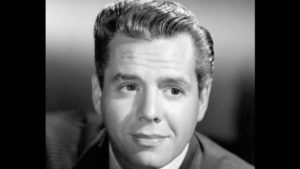
Desiderio Alberto Arnaz y de Acha III, March 2, 1917 – December 2, 1986), better known as Desi Arnaz, was a Cuban-American actor, bandleader, and film and television producer. He played Ricky Ricardo on the American television sitcom I Love Lucy, in which he co-starred with his then-wife Lucille Ball. Arnaz and Ball are credited as the innovators of the syndicated rerun, which they pioneered with the I Love Lucy series.
Arnaz and Lucille Ball co-founded and ran the television production company called Desilu Productions, originally to market I Love Lucy to television networks. After I Love Lucy ended, Arnaz went on to produce several other television series, at first with Desilu Productions, and later independently, including The Ann Sothern Show and The Untouchables. He was also the bandleader of his Latin group, the Desi Arnaz Orchestra.
EARLY LIFE
Arnaz was born in Santiago de Cuba, Cuba, on March 2, 1917, to Desiderio Alberto Arnaz y de Acha II (March 8, 1894 – May 31, 1973) and Dolores “Lolita” de Acha y de Socias (April 2, 1896 – October 24, 1988). His father was Santiago’s youngest mayor and also served in the Cuban House of Representatives.
 VIDEOS- “I Love Lucy Program (Trailer)..
VIDEOS- “I Love Lucy Program (Trailer)..
Following the Cuban Revolution of 1933, Alberto Arnaz was jailed and all of his property was confiscated. He was released after six months when his brother-in-law Alberto de Acha intervened on his behalf. The family then fled to Miami, where Desi attended St. Patrick Catholic High School in Miami Beach. In the summer of 1934, he attended Saint Leo Prep (near Tampa) to improve his English. His first job was working at Woolworth’s in Miami. He then went into the tile business with his father before turning to show business full-time.
ARTISTIC CAREER
After finishing high school, Arnaz formed a band, the Siboney Septet, and began making a name for himself in Miami. Xavier Cugat, after seeing Arnaz perform, hired him for his touring orchestra, playing the conga drum and singing. Becoming a star attraction encouraged him to start his own band, the Desi Arnaz Orchestra.
Arnaz and his orchestra became a hit in New York City’s club scene, where he introduced the concept of conga line dancing to the city. He came to the attention of Rodgers and Hart who, in 1939, cast him in their Broadway musical ‘Too Many Girls’. The show was a hit and RKO Pictures bought the movie rights.
Arnaz went to Hollywood the next year to appear in the show’s movie version at RKO, which also starred Lucille Ball. Arnaz and Ball fell in love during the film’s production and eloped on November 30, 1940.
Arnaz appeared in several movies in the 1940s such as Bataan, starring Robert Taylor (1943). His portrayal of Felix Ramirez, the jive-loving California National Guardsman, was described by New York Times critic Bosley Crowther as one of several supporting players who were “convincing in soldier roles”.
After the II World War, following his discharge as a staff sergeant on December 1, 1945, Arnaz formed another orchestra, which was successful in live appearances and recordings. He sang for troops in Birmingham Hospital with John Macchia and hired his childhood friend Marco Rizo to play piano and arrange for the orchestra.
 VIDEOS- “I Love Lucy Program (Trailer)..
VIDEOS- “I Love Lucy Program (Trailer)..
For the 1946–47 season, Arnaz was the bandleader, conducting his Desi Arnaz Orchestra, on Bob Hope’s radio show (The Pepsodent Show) on NBC. When he became successful in television, he kept the orchestra on his payroll, and Rizo arranged and orchestrated the music for I Love Lucy.
“I LOVE LUCY” PROGRAM
On October 15, 1951, Arnaz co-starred in the premiere of I Love Lucy, in which he played a fictionalized version of himself, Cuban orchestra leader Enrique “Ricky” Ricardo. His co-star was his real-life wife, Lucille Ball, who played Ricky’s wife, Lucy. Television executives had been pursuing Ball to adapt her very popular radio series My Favorite Husband for television. Ball insisted on Arnaz playing her on-air spouse so the two would be able to spend more time together. CBS wanted Ball’s Husband co-star Richard Denning.
Initially, the idea of having Ball and the distinctly Latin American Arnaz portray a married couple encountered resistance as they were told that Desi’s Cuban accent and Latin style would not be agreeable to American viewers. The couple overcame these objections, however, by touring together, during the summer of 1950, in a live vaudeville act they developed with the help of Spanish clown Pepito Pérez, together with Ball’s radio show writers.
DESILU PRODUCTIONS
With Ball, Arnaz founded Desilu Productions in 1950, initially to produce the vaudeville-style touring act that led to I Love Lucy. At that time, most television programs were broadcast live, and as the largest markets were in New York, the rest of the country received only kinescope images. Karl Freund, Arnaz’s cameraman, and even Arnaz himself have been credited with the development of the multiple-camera setup production style using adjacent sets in front of a live audience that became the standard for subsequent situation comedies.
The original Desilu company continued long after Arnaz’s divorce from Ball and her subsequent marriage to Gary Morton. Desilu continued to produce its own programs in addition to providing facilities to other producers. In 1962, Arnaz sold his share of Desilu to Ball and formed his own production company after their divorce.
MARRIAGES
Arnaz and Lucille Ball were married on November 30, 1940. Their marriage was always turbulent. Convinced that Arnaz was being unfaithful to her and also because he came home drunk several times, Ball filed for divorce in September 1944, but returned to him before the interlocutory decree became final.

Arnaz’s marriage with Ball began to collapse under the strain of his growing problems with alcohol, gambling, and infidelity. According to his memoir, the combined pressures of managing the production company, as well as supervising its day-to-day operations, had greatly worsened as the company grew much larger, and he felt compelled to seek outlets to alleviate the stress. Arnaz also suffered from diverticulitis. Ball divorced him in 1960. When Ball returned to weekly television, she and Arnaz worked out an agreement regarding Desilu, wherein she bought him out.
Arnaz married his second wife, Edith Hirsch (née McSkimming), on March 2, 1963, and greatly reduced his show business activities. He served as executive producer of The Mothers-in-Law, and during its two-year run, made four guest appearances as a Spanish matador, Señor Delgado. Edith died in 1985, aged 67, from cancer.
Although Arnaz and Ball both married other spouses after their divorce in 1960, they remained friends and grew closer in his final decade. When Arnaz was diagnosed with lung cancer in 1986, Lucille visited him and the two watched VHS tapes of “I Love Lucy”. On what would have been their 46th wedding anniversary, she telephoned him and they spoke for a short time, including saying “I love you.” She finished by saying, “all right, honey. I’ll talk to you later”. He died two days later on December 2, 1986.
Lucy Ball was one of 100 people to attend Arnaz’s funeral in 1986.
“I Love Lucy was never just a title”, wrote Arnaz in the last years of his life. Family home video later aired on television showed Ball and Arnaz playing together with their grandson Simon shortly before Arnaz’s death.
LATER LIFE
In the 1970s, Arnaz co-hosted a week of shows with daytime host and producer Mike Douglas. Vivian Vance appeared as a guest. Arnaz also headlined a Kraft Music Hall special on NBC that featured his two children, with a brief appearance by Vance. To promote his autobiography, A Book, on February 21, 1976, Arnaz served as a guest host on Saturday Night Live, with his son, Desi, Jr., also appearing. The program contained spoofs of I Love Lucy and The Untouchables. The spoofs of I Love Lucy were supposed to be earlier concepts of the show that never made it on the air, such as “I Love Louie”, where Desi lived with Louis Armstrong. He read Lewis Carroll’s poem “Jabberwocky” in a heavy Cuban accent (he pronounced it “Habberwocky”). Desi Jr., played the drums and, supported by the SNL band, Desi sang both “Babalú” and another favorite from his dance band days, “Cuban Pete”; the arrangements were similar to the ones used on I Love Lucy. He ended the broadcast by leading the entire cast in a raucous conga line through the SNL studio.
Desi Arnaz and his wife eventually moved to Del Mar, California where he lived the rest of his life in semi-retirement. He owned a horse-breeding farm in Corona, California, and raced Thoroughbreds. The Desi Arnaz Stakes at Del Mar Racetrack is named in his honor.
DEATH
Arnaz was a regular smoker for much of his life and often smoked cigarettes on the set of I Love Lucy. He smoked cigars until he was in his sixties. Arnaz was diagnosed with lung cancer in 1986 and died several months later on December 2, 1986, at the age of 69. Arnaz was cremated and his ashes scattered. His death came just five days before Lucille Ball received the Kennedy Center Honors. He was predeceased by his second wife, Edith, who had died a year earlier on March 23, 1985. His mother outlived him by almost two years.
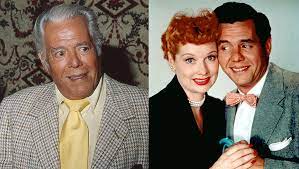
LEGACY
Desi Arnaz has two stars on the Hollywood Walk of Fame: one at 6301 Hollywood Boulevard for contributions to motion pictures and one at 6250 Hollywood Boulevard for television. Unlike his co-stars, Arnaz was never nominated for an Emmy for his performance in I Love Lucy; however, as executive producer of the series, he was nominated four times in the Best Situation Comedy category, winning twice. In 1956, he won a Golden Globe for Best Television Achievement for helping to shape the American Comedy through his contributions in front of and behind the camera of I Love Lucy. He was inducted into the Television Academy’s Hall of Fame.
The Lucille Ball-Desi Arnaz Center museum is in Jamestown, New York, and the Desi Arnaz Bandshell in the Lucille Ball Memorial Park is in Celoron, New York.
Desi Arnaz appears as a character in Oscar Hijuelos’s 1989 novel The Mambo Kings Play Songs of Love and is portrayed by his son, Desi Arnaz Jr., in the 1992 film adaptation, The Mambo Kings.
Arnaz was portrayed by Oscar Nuñez in I Love Lucy: A Funny Thing Happened on the Way to the Sitcom, a comedy about how Arnaz and Ball battled to get their sitcom on the air. It had its world premiere in Los Angeles on July 12, 2018, co-starring Sarah Drew as Lucille Ball and Seamus Dever as I Love Lucy creator-producer-head writer Jess Oppenheimer. The play, written by Jess Oppenheimer’s son, Gregg Oppenheimer, was recorded in front of a live audience for nationwide public radio broadcast and online distribution. BBC Radio 4 broadcast a serialized version of the play in the UK in August 2020, as LUCY LOVES DESI: A Funny Thing Happened on the Way to the Sitcom, starring Wilmer Valderrama as Arnaz and co-starring Anne Heche as Lucille Ball.
On March 2, 2019, Google celebrated what would have been Arnaz’s 102nd birthday with a Google doodle.
Javier Bardem portrayed Arnaz in the 2021 biographical film Being the Ricardos written and directed by Aaron Sorkin and produced by Amazon Studios, alongside Nicole Kidman as Ball. He was nominated for an Academy Award for Best Actor.
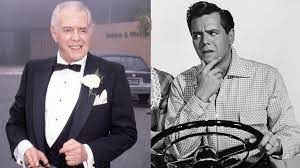
PERSONAL LIFE
Parent(s)
Desiderio Alberto Arnaz y de Alberni II
Dolores de Acha y de Socias
Spouse(s)
Lucille Ball (m. 1940; div. 1960); Edith Hirsch (m. 1963; died 1985)
Children
Lucie Arnaz (born 1951) and Desi Arnaz Jr. (born 1953).
Desi Arnaz contributed to charitable and nonprofit organizations, including San Diego State University. He also taught classes at San Diego State in studio production and acting for television.
FILMOGRAPHY
As actor
Selected and Last Performances
1959: Make Room for Daddy (1 episode, 1959) …. Ricky Ricardo
1959: Sunday Showcase (1 episode, 1959) …. Ricky Ricardo
1961: The Red Skelton Show (1 episode, 1961) …. Guest / Himself
1967: The Mothers-in-Law (4 episodes, 1967–1968) …. Raphael del Gado
1970: Kraft Music Hall (1 episode, 1970) …. Host
1970: The Virginian (repackaged as “The Men From Shiloh”) (1 episode, 1970) …. El Jefe
1974: Ironside (1 episode “Riddle at 24000” season 7 episode 23, 1974) …. Dr. Juan Domingo
1976: Saturday Night Live (February 21, as host and musical guest)
1978: Alice (1 episode, 1978) …. Paco
1982: The Escape Artist …. Mayor Leon Quiñones (final film role)
As producer
1958: The Ann Sothern Show (executive producer) (93 episodes, 1958–1961)
1960: New Comedy Showcase TV series (executive producer)
1961: The Untouchables (executive producer) (3 episodes, 1961–1962)
1962: The Lucy Show (executive producer) (15 episodes, 1962–1963)
1967: The Mothers-In-Law (executive producer) (56 episodes, 1967–1969)
1968: Land’s End TV pilot (producer)
As writer
1959: Westinghouse Desilu Playhouse (1 episode, 1959) – Ballad for a Bad Man (1959) TV episode (writer)
1968: Land’s End TV pilot (creator)
As director
1959: Sunday Showcase (1 episode, 1959)
1959: The Lucy-Desi Comedy Hour (3 episodes, 1959–1960)
1966: The Carol Channing Show (TV)
1967: The Mothers-In-Law (24 episodes, 1967–1968)
Agencies/ Wiki/ DesiArnazBio./ Extractos/ Excerpts/ Internet Photos/ YouTube/ Arnoldo Varona/ www.TheCubanHistory.com
THE CUBAN HISTORY, HOLLYWOOD.

RECOMIENDENOS A SUS AMISTADES * PREFIERA A NUESTROS SPONSORS.

 VIDEOS- Libertad Lamarque canta “Ay Mama Ines”..
VIDEOS- Libertad Lamarque canta “Ay Mama Ines”.. VIDEOS- Libertad Lamarque canta en Cuba..
VIDEOS- Libertad Lamarque canta en Cuba..



